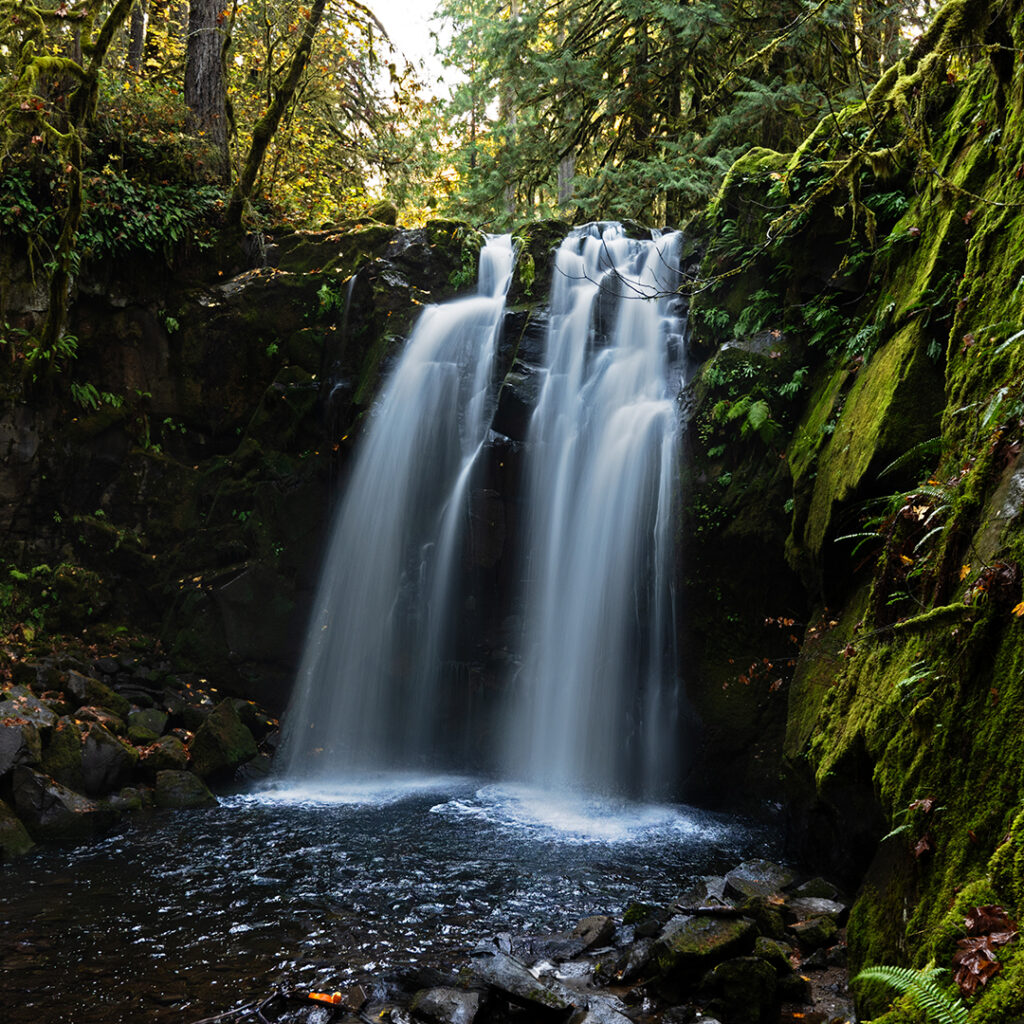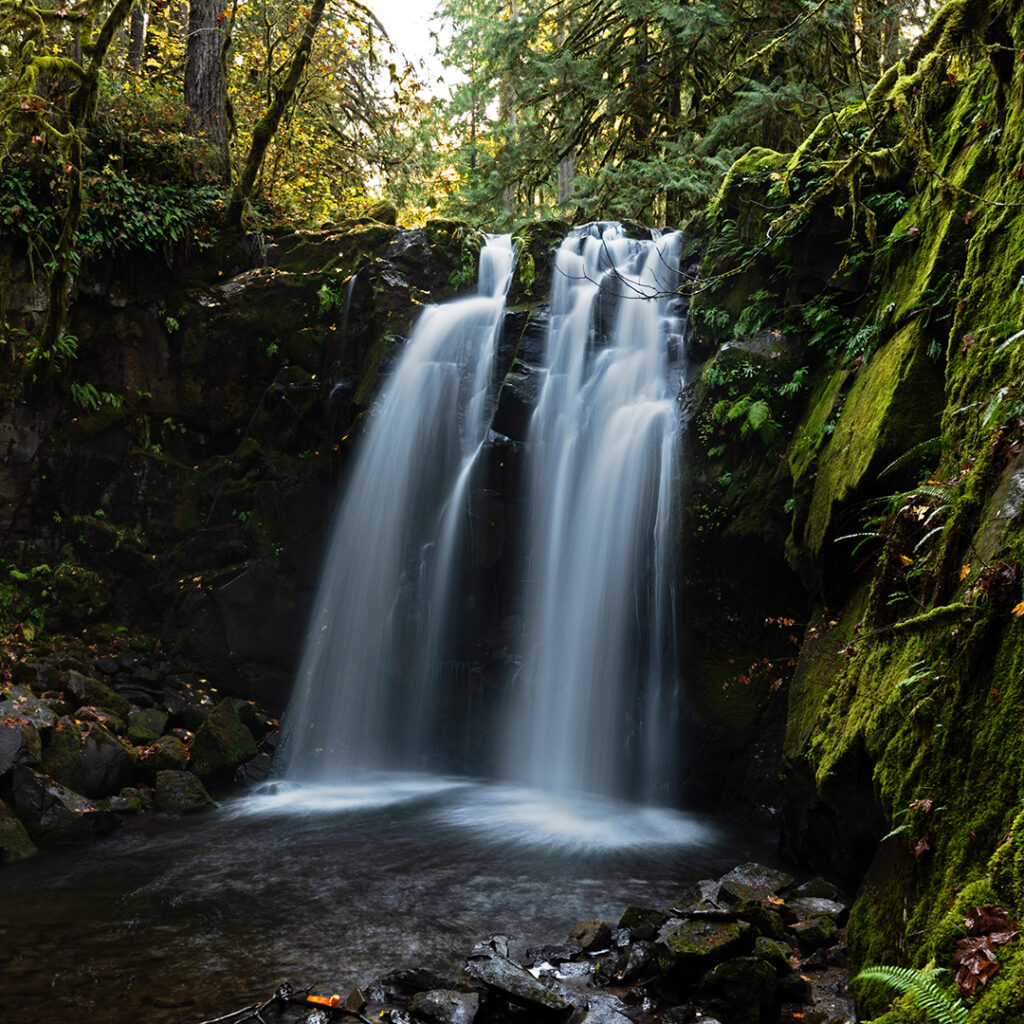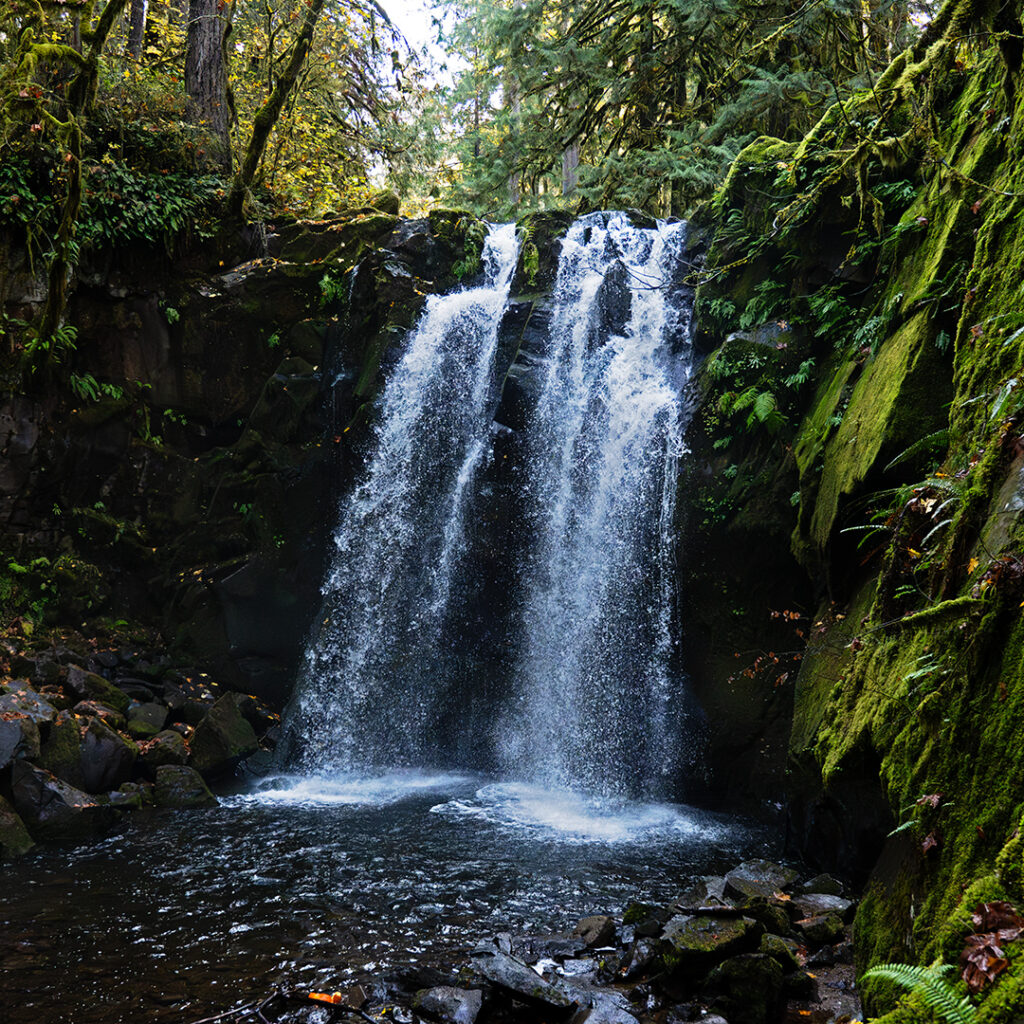This waterfall picture is a combination of two different pictures. One was taken with a short shutter speed, so that the water appears frozen. The other was taken with a long shutter speed, so that the water appears as a silky flow. There are people who prefer both; there is no “right” way to photograph a waterfall because each of the two techniques illustrates something different.
(You can see the two original pictures below; click on the pictures to see larger versions.)
For me, the one with frozen motion illustrates the dynamic nature of the water, some of the power that’s on display. It also looks more real in the sense that it seems to best match what I see with my eyes.
The one that looks silky seems to illustrate the peacefulness that such locations inspire. Rather than conveying motion and power, it conveys calmness. After taking the pictures, I hung out in that spot for a while, enjoying the peace, the beautiful scenery, and the natural sounds.
They are both useful pictures, and the only question is what feelings one wants to highlight.
However, there’s one thing that I don’t like as much about the silky picture – the water in the pool at the bottom, where the waterfall is entering the stream, doesn’t work for me. It doesn’t look real, but neither does it evoke any particular emotion. For me, it doesn’t convey the sense of peace that the silky streams above do. It looks abstract, kind of artificial, and is almost distracting because of that.
So, I tried an experiment. I used the long exposure picture for the waterfall itself, but used the creek water from the faster exposure. That looks more real, which allows it to fade into the scenery and not distract from the waterfall.
I think the jury is still out as to whether this really works. It might be more or less successful for different flows. But the process itself is educational in the sense of learning about the aesthetics of waterfall photography. More experiments are definitely needed in order to explore both the artistic and technical aspects of this.
Here are the two source images, both taken at 24 mm but cropped.


